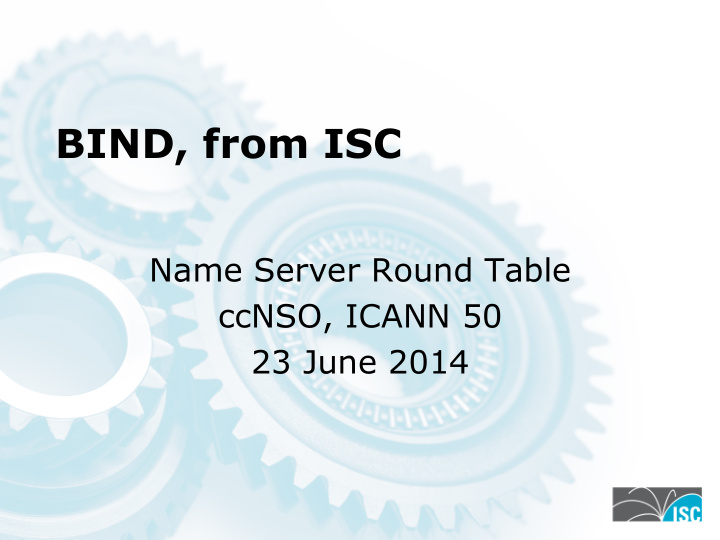



BIND, from ISC Name Server Round Table ccNSO, ICANN 50 23 June 2014
BIND use cases 2013 BIND support subscriptions • BIND is the Swiss Army Education, knife of DNS software. 3% • It is intended to work for TLD, 11% any use case Enterprise, • Though it is not optimal for 16% every use, it will always work Government Telco, 25% , 8% • Recent BIND features ISP, 9% support different use cases • ~35,000 copies of BIND downloaded via ISC http OEM, 28% since January, 2014
BIND Provisioning overview • Authoritative and recursive service from same program, NAMED • Configured at startup from config file (named.conf), or while running using a realtime controller (RNDC) • Config file is a permanent record of a configuration. • Zone files or zone databases can be manipulated like any other file (e.g. using standard tools) • Accepts DDNS updates
A few BIND features • Views • In-line DNSSEC signing • Response Policy Zones • Response Rate Limiter • Dynamically loaded zones • Resolver prefetch of expiring data
DNSSEC Support Serve signed zones Sign zones In-line signing NSEC, NSEC3 Hash methods: hmac-md5, hmac-sha1, hmac-sha224, hmac-sha256, hmac-sha384, hmac-sha512 Key management, scheduled rollover (next release) HSM support (native PKCS#11) DNSSEC troubleshooting (delv) Negative Trust Anchor (next release)
General vs special tools • BIND is universal. If you want to use just one tool for all DNS service, use BIND. • ISC works hard to ensure that BIND correctly implements every new RFC. • There are a lot of RFCs, so BIND has a lot of features. • For a large-scale mission-critical service, software heterogeneity is ideal.
Recommend
More recommend